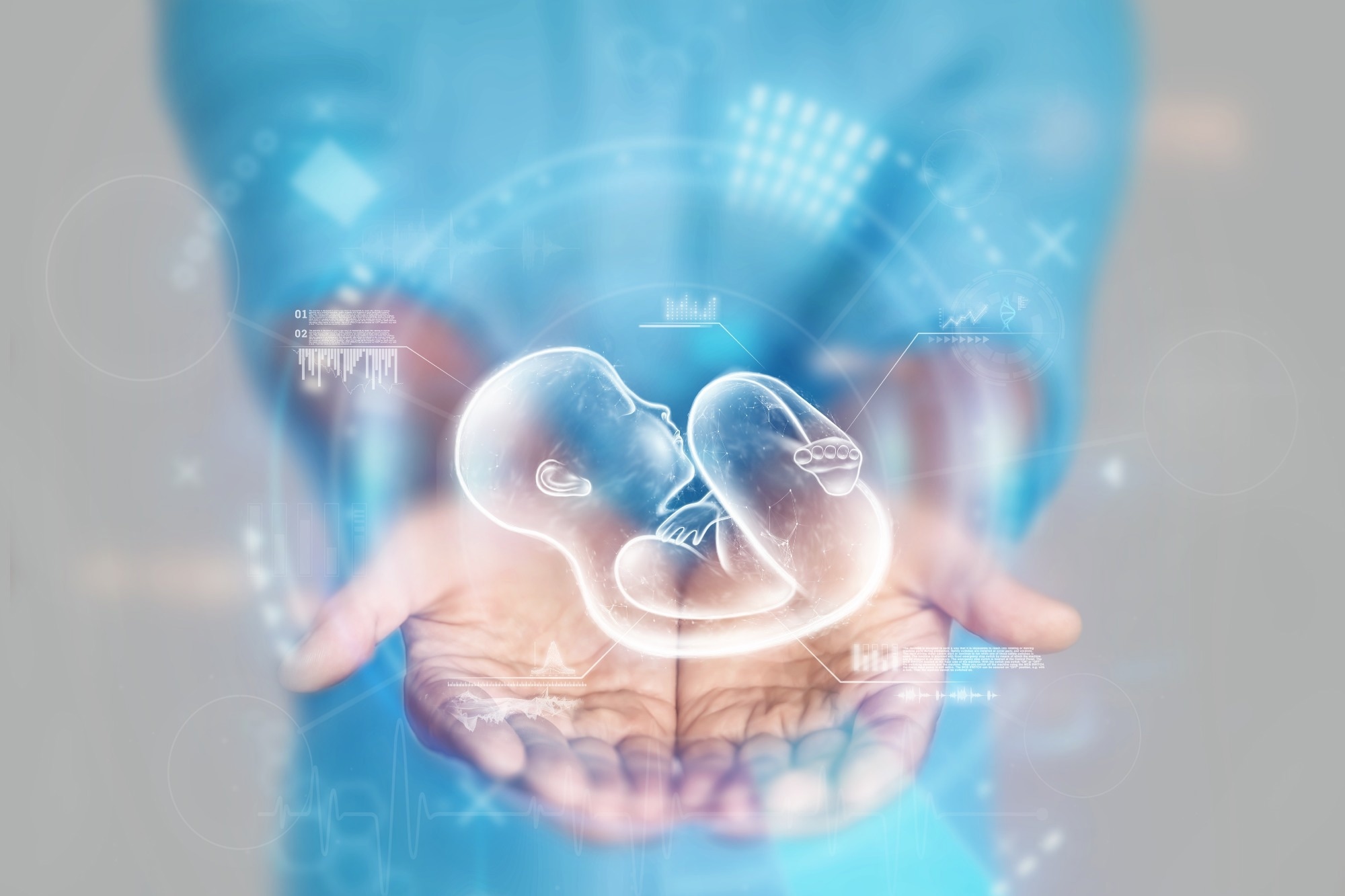A recent Nature study evaluates post-implantation development in humans using embryo-like models based on genetically unmodified human naïve embryonic stem cells (ESCs).
 Study: Complete human day 14 post-implantation embryo models from naïve ES cells. Image Credit: Marko Aliaksandr / Shutterstock.com
Study: Complete human day 14 post-implantation embryo models from naïve ES cells. Image Credit: Marko Aliaksandr / Shutterstock.com
Background
After implantation of the human embryo, a series of events such as morphogenesis of the extraembryonic tissues are essential for gastrulation, future development, as well as the proper organization of embryonic cells.
Since a high rate of embryo loss occurs during this phase, it is imperative to understand the events associated with morphogenesis. Although this information is crucial for understanding fertility issues and developmental defects, studies on this topic are associated with both technical and ethical challenges.
It is possible to culture structures derived from human blastocysts; however, these models do not accurately represent the in vivo events and organization. Therefore, there is a need to develop stem cell-derived embryo models to study post-implantation stages.
An effective human integrated post-implantation embryo model must have a continual presence of equivalents of vital cells, such as trophoblasts, primitive endoderm, extra-embryonic mesoderm (ExEM), and pluripotent epiblast-like cells. This model must have prominent embryonic compartments with appropriate morphological and structural organization, as well as possess a suitable embryonic disc, bilaminar disc, hypoblast, polarized amnion unit, polarized yolk sac, trophoblast-like compartment, and chorionic cavity.
Mouse naïve ESCs have been used to recapitulate ex utero to study post-gastrulation stages. Stem cell-derived synthetic whole embryo models (SWEMs) were developed, which were renamed SEMs, to study the post-implantation phase of human embryos.
Previous studies have shown that mouse SEMs can dynamically progress beyond the gastrulation stage and reach early organogenesis stages of development. Therefore, mouse naïve pluripotent cells can be used as a potential source of embryonic and extra-embryonic tissues to develop “organ-filled” embryo models.
About the study
The availability of optimized protocols for two-dimensional (2D) in vitro human pluripotent stem cells (PSC) to differentiate into mature cells could provide a better understanding of the transcriptional, mechanical, and signaling pathways associated with early embryogenesis.
Considering the recent progress in mouse SEMs and advancements in naïve human pluripotent stem cells (PSC) conditions, the current study evaluated the possibility of using these cells to develop complex peri/post-implantation embryo-like structures that can progress to pre/peri-gastrulation stages ex utero.
Study findings
Using the method described in a mouse model, the current study generated self-organizing human post-implantation SEMs from naive ESCs. In contrast to mouse SEM derivation protocols, the current study protocol did not require genetic modification or overexpression of exogenous lineage factors for naïve ESCs to differentiate into key embryonic lineages essential for developmental stages.
The self-organization capacity of naïve PSCs to generate embryonic and extra-embryonic compartments, including the ExEM, was described. Notably, newly created ex utero human SEMs resembled the three-dimensional (3D) architecture and crucial developmental markers of in utero of natural human embryos, particularly from 7-8dpf to 13-14dpf based on Carnegie stages 5a-6a. Carnegie stages are a standardized system used by embryologists to describe the maturity of embryos.
An appropriate spatial allocation of cell lineages was observed, in which definite embryonic and extra-embryonic compartments were formed in the absence of fertilization or interaction with maternal tissues. Importantly, this was achieved without the use of an external targeted signaling pathway to induce self-organization of the aggregated cells. Thus, at the structural level, the newly developed human SEM significantly resembles but is not identical to natural in utero conditions.
The generated embryonic-body (EB) did not contain the most basic and defining markers of integrated embryo models. For example, EB-like aggregates lacked key cell lineages of developing embryos including visceral, trophoblast lineage, and parietal primitive endoderm.
Additionally, EBs lacked an embryonic disc, bilaminar disc, yolk sac, hypoblast, and surrounding trophoblast-like compartment, which are essential structural features of developing embryos. EB-like aggregates were also limited in their ability to progress structurally to the next developmental stages following initial aggregate formation. Thus, these EB aggregates do not qualify as models for embryos.
Conclusions
It is important to study early human post-implantation development to better understand human embryogenesis, which will also provide important insights into early pregnancy loss and development of birth defects. The current study aimed to develop an embryo model containing all important embryonic structures, which will help future research on early embryogenesis.
The EB aggregates formed in this study did not meet all criteria; therefore, it cannot be used as a model to study embryo development. Considering the well-defined embryonic structures developed in this study, it is possible that by overcoming limitations associated with EB aggregate formation, this model could be used to study early embryogenesis.